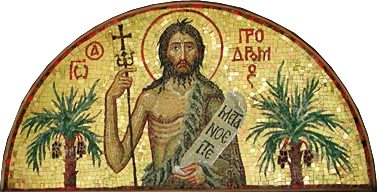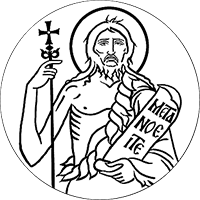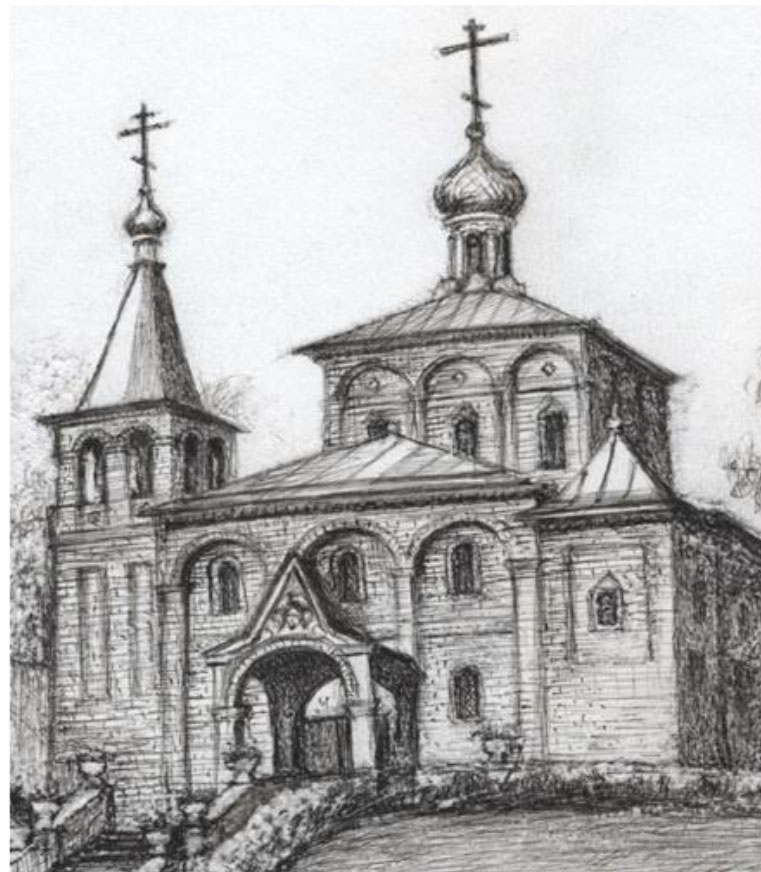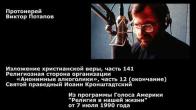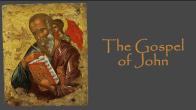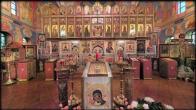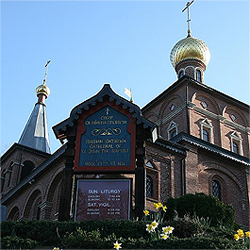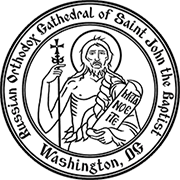You are here
Third Sunday of the Great Lent. Adoration of the Holy Cross.
 Troparion
Troparion
O Lord, save Your people, and bless Your inheritance. Grant victories to the Orthodox Christians, over their adversaries. And by virtue of Your Cross preserve Your habitation!
Kontakion
Now the flaming sword no longer guards the gates of Eden; it has mysteriously been quenched by the wood of the Cross! The sting of death and the victory of hell have been vanquished; for You, O my Savior, have come and cried to those in hell: "Enter again into paradise."
The Cross of Christ
Professor I.M. Andreyev
“O Invincible and incomprehensible and divine power of the precious and life-giving Cross, forsake not us sinners.”
(From the order of Great Compline)
The Cross is the mighty and profound symbol of Christianity, a symbol whose meaning is inexhaustible. The eight-pointed Cross is the symbol of Orthodoxy.
Gazing upon the Cross with his mind and heart, the Christian goes deeper into that symbol and grows spiritually. Just as a plant needs fertile soil, moisture, and sunlight in order to grow, so a Christian needs the Cross of Christ in his spiritual and physical life, for the Cross of Christ provides him with nourishment, drink, warmth, and light
Does everyone know what the Cross is for Christians? Does everyone understand that the depth of meaning and substance of that Christian symbol is truly inexhaustible? Let us attempt to concentrate a bit in order to piously reflect on the Cross, on that same Cross which the Holy Church brings out on the Sunday of Orthodoxy to remind us of the Passion of Christ.
Our difficult, awful, evil, hurried time does not allow us to focus our concentration. People crave entertainment, a variety of experiences, productions, ideas, feelings, and actions. The Cross calls us toward the opposite. In it there is no movement, no change, no external variation. The Cross demands that we concentrate our attention upon the depths of the soul. Then, in its simplicity, stillness, and silence, its infinite substance and bottomless depth of meaning opens up to us.
The Holy Apostle Paul wanted to know nothing in the world “save Jesus Christ, and Him Crucified”(I Corinthians 2: 2). This was because to know the Lord Jesus Christ, crucified on the Cross, gives one everything he needs. The Cross was made of the tree of the knowledge of good and evil, the tree, which the first man touched, despite the Lord’s commandment forbidding him to do so. On the Cross, our Lord Jesus Christ tore up the manuscript of Adam’s sin and likewise accomplished the salvation of man. Watered with the Divine Blood, that Cross, which had come from the tree of the knowledge of good and evil, which had brought people death, was transformed into the Tree of Life. Each Cross bearing the image of the Crucified Savior, wordlessly says to us… “Here is what I have done for you. What have you done for Me?” On the Cross is written everything that we need to know about God and about ourselves… our fall and our restoration, our sin and Divine Mercy. The Cross instructs us in great patience and humility, love and forgiveness of all, crucifixion of our flesh and hope in eternal salvation. The outstretched, crucified arms clearly bear witness to the fact that the Lord does not desire the death of a sinner, and that He is ready to forgive and embrace everyone who truly repents, regardless of how sinful they might be.
We find prototypes of the Cross in the Old Testament. The Patriarch Jacob blessed Joseph’s children Ephraim and Manasseh crosswise (Genesis, chapter 48). Moses used his staff to make the sign of the Cross on the waves of the Red Sea (Exodus, chapter 14). The latter example shows us that the Cross has the power to overcome even the laws of nature. There are other examples in which through the Cross “the natural order is overcome.”… Thus, for example, the Holy Martyr St. Vasilissa of Nicomedia, having protected herself with the sign of the Cross, stood unharmed in the midst of the flames. Thus, the Holy Bishop Julian, after making the sign of the Cross over the cup of poison, drank it without suffering any harm. The Cross is also the banner of military victory. When the Amalekites attacked the Hebrews after their exodus out of Egypt, Moses, supported by the priests, prayed with arms extended in the form of a Cross, and the Amalekites were defeated (Exodus 16: 11). St. Cyprian of Carthage explains that the Israelites were victorious because the cruciform stretching out of the arms was a prototype of the Cross of Christ. The clearest evidence of the victorious power of the Cross of Christ was demonstrated in Emperor Constantine the Great’s seeing a brilliantly shining Cross in a clear, cloudless sky, and hearing the words “In this [sign] you shall conquer.”
The Cross also grants healing. In the Old Testament, the bronze serpent, which prefigured the Cross, healed all those who had been bitten by the deadly serpents sent by God as punishment for the Hebrews’ complaining. If a prototype of the Cross held such healing power, how much more powerfully does the Cross of Christ itself heal! From ancient times and still today, the Orthodox Church has considered the Cross a great defense against all disease, whether physical or spiritual. This is why since antiquity, Christians have worn the Cross on their breast. To wear such a Cross was considered to be: 1) a confession that you were a Christian, and 2) a defense, “to ward off any evil.” Even today, one often sees written on Crosses to be worn on the breast, the words, “O Lord, Save and Protect [me]!” When a priest blesses such a Cross, he prays that it might be “for him that shall bear it on himself may it be for a saving defense and preservation against every evil of soul and body and for the increase of increase him of Thy spiritual gifts and Christian virtues” and that it might be filled with “Thy power and strength for the repulsion and dispelling of every snare of the devil,” and be “the preservation of soul and body from the face of enemies visible and invisible and from every evil.” (Supplemental Book of Needs).
In the canon “To the Honorable and Life-giving Cross” composed by Gregory of Sinai, the Orthodox Church sings out... “O cross! Be unto me the might, the strength and the power, the deliverer and foremost defender against my assailants, the shield and protector, my victory and establishment, ever preserving and sheltering me.” “O Cross ... as a three-edged sword thou dost cut off the principles of darkness, being the great weapon of Christ and an invincible and all-powerful trophy of victory…” For the Cross is “the symbol of the Incomprehensible Trinity, the Life-bearer.”
The Cross is a great, invincible weapon that conquers all. However, one needs to know how to use that weapon, that power. For even an ordinary weapon, a firearm or other weapon, can be an impotent one in the hands of someone inexperienced, and can even be a danger to the one who wields it. The invincible and almighty power of the Cross becomes so, and is conditional upon faith and piety. One cannot use the power of the Cross, one cannot utilize it as a weapon in the absence of faith and piety, for it is a weapon of the Holy Truth of Christ. One must not make the sign of the Cross over oneself or others without faith and piety.
The enemies of the Cross are the enemies of Christ. During the time of the Zaporozhian Syetch, such enemies were discovered quite simply… It was enough to simply observe how a person read the “Our Father” and crossed himself with the Orthodox sign of the Cross.
( …)
The Cross is first of all the symbol of our salvation. In signing ourselves with the sign of the Cross, we pray to God the Father through His Son's Cross (when we say the Lord’s Prayer) or to our Savior, God the Son Himself through the Cross of His Golgotha (when we address prayers to the Lord Jesus Christ), or to God the Holy Spirit (in the prayer “O Heavenly King”) — again through the Savior’s Cross, through the Cross by which He acquired the right to send us the Comforter. Signing oneself with the sign of the Cross has particular meaning when praying for forgiveness and salvation, for we cannot be forgiven or saved on account of any personal merits, no matter how great they might be! It is only thanks to the Passion of Christ, at the price of His precious blood, and only after our repentance and the fruits of repentance, that we dare hope in forgiveness and salvation. Such is the primary, profound meaning of signing oneself with the sign of the Cross. If we comprehend that, how can we possibly make the sign of the Cross carelessly?
The Cross is the most-powerful, almighty source of comfort and strength in times of sorrow, despondency, and despair. The Cross is the last hope of those who despair, and it never puts to shame those who have hope. It is enough but to imagine the Savior Crucified, and with only a tiny corner of your heart to intend to repent, and immediately, without delay, the Savior, who kisses the intention, sends His almighty help. Countless numbers of people have been saved from committing suicide because, for just a moment, they turned their thoughts in faith to the crucified Savior.
It was from the Cross that the prayer for forgiveness of enemies went forth.
It was from the Cross that the repentant wise thief was granted mercy.
It was from the Cross that the Holy Apostle John the Theologian (and with him, all faithful Christians) was adopted by the Most-holy Theotokos, the hope that cannot be put to shame of those without hope.
The Mother of God stood at the Cross – with her arms crossed on her breast. She was the first to cross her arms before the Cross of her Son and God, being crucified with Him in her maternal heart, remembering on Golgotha the Righteous Symeon’s prophetic words “and a sword shall pierce through thy own soul also that the thoughts of many hearts may be revealed.” Comprehending that, dare we not reveal the thoughts within our hearts? And crossing our arms over our breasts, dare we not remember in our hearts her holy crossed arms?
Approaching the Holy Chalice, we always fold our arms cross-wise across our breast. We do not sign ourselves with the sign of the Cross (lest, in doing so, we jostle the Holy Chalice), but we hold a cross [our crossed arms] over our breast. When we commune, we stand as it were at the cross, together with the Most-holy Theotokos, for we commune of the Body and Blood of the Crucified One
“With fear of God and faith draw nigh.” Can one possibly approach without fear and faith, the Crucified Savior, upon seeing Whom the sun went dark, the earth shook like a living being? Out of fear, the Angels were incapable of seeing the Lord’s Passion.
The Cross teaches us humility and patience, sobriety and discernment, purity of heart, faith, hope and Christ’s sincere love, love that is so sharply different from ordinary human love. Ordinary earthly love is egocentric and selfish, while Christ’s true love is sacrificial and compassionate. The guide to true love is always the Cross, from which true love in fact is “more powerful than death.”
All of the Holy Mysteries of the Church of Christ are intimately tied to the Cross… In Holy Baptism, everything is done under the sign of the Cross. In Chrismation; the same. Repentance is a “second Baptism,” a “Baptism of tears.” Holy Unction is an augmented Baptism of tears of repentance. Holy Matrimony is a Baptism into life together as husband and wife. Ordination is Baptism into service to the Church. Without the Cross, the Holy Eucharist would be utterly unimaginable. Reflecting on the Mystery of the Cross as Eucharist [i.e. Thanksgiving], St. John Cassian the Roman, asserts that this Mystery will be performed eternally by Christ the High Priest in the Kingdom of Heaven, for Christ’s Sacrifice on the Cross can never be forgotten even unto ages of ages.
To a true Christian, the Cross of Christ cannot but evoke a reciprocal, grateful, compassionate and sacrificial love for the Lord, together with a yearning to be crucified with Christ. After all, the Cross wordlessly prays about that very thing. In bearing a Cross upon one’s breast, or signing oneself with the sign of the Cross, or crossing one’s arms over one’s breast, we Christians testify that we are ready to carry the Cross without complaint, to carry it humbly, voluntarily, and joyfully, for we love Christ and want to share in His suffering, for His sake. The Cross of Christ not only calls us to voluntary suffer, but also shows us the example of undeserved travails crowned with the highest honor, the Crown of Thorns upon His Holy Head. And the whole “Karamazov” question… how can the suffering of innocent children be justified... is resolved so clearly and profoundly simply by just looking upon the Savior, the Innocent One, nailed to the Cross. However, the Cross is not simply a symbol of suffering. It is also a symbol of victory, and of the triumph of love and truth. It is also a symbol of the eternal joy that follows temporary suffering, a joy that nothing can ever take from us. The Cross truthfully promises us that every little tear will be wiped away, that all sorrow borne for Christ’s sake, will turn to joy, that the droplets of tears, blood, and sweat a Christian who loves Christ sheds before his death will become diamonds, rubies and pearls of inexpressible beauty in the Kingdom of Heaven.
The Cross calls us to spiritual struggle, and promises us help, victory, triumph, and the glory of the Resurrection.
All of the above makes it possible to understand why a Christian’s entire life, from the day of his birth to his final breath on earth, and even after his death, is accompanied by the Cross. A new mother, after the pain of giving birth, “forgets herself in her joy that a person has been born into the world” and signs herself and the newborn infant with the sign of the Cross. The infant is baptized in the Holy Font in water that has been blessed by the Cross. With his first steps of intellectual and emotional development, a child learns – with his hand at first guided by a close relative - about the Cross and the sign of the Cross.
A Christian child’s first conscious religious action should be to independently sign himself with the sign of the Cross. A Christian makes the sign of the Cross upon awakening (one should teach oneself that that should be the first thing he does); it should be his final action upon going to bed. A Christian signs himself with the sign of the Cross before and after eating, before and after studies, upon going outside, before beginning any work, before taking medication, before opening a letter received in the mail, upon receiving unexpected happy or sad news, upon entering someone else’s home, a train, or a ship, and in general, at the beginning of any journey, recreational walk, or excursion, before bathing, visiting the sick, going to court, to an interrogation, to jail, into exile, before an operation, before a battle, before academic or other lectures, before and after a meeting or gathering, etc. However, just as one must not wear a Cross as an amulet, one should not turn the sign of the Cross into a talisman, for both the Cross and the sign of the Cross are simply external expressions of that which must be in a Christian’s heart: humility, faith, and hope in the Lord.
When a Christian dies, others, his relatives cross his arms over his chest, and form his fingers into the sign of the Cross. At the grave, the final Cross is erected. The Dread Judgment will begin with the appearance of the Cross of Christ.
Everything (I have stated) above) is but a tiny page out of the “book about the Cross,” a book consisting of countless numbers of pages.
Glory to Thy Precious Cross, O Lord!
PARISH LIFE
RECENT VIDEOS
Address of our Cathedral
Subscribe to our mailing list
While all the materials on this site are copyrighted, you may use them freely as long as you treat them
with respect and provide attribution on the Russian Orthodox Cathedral of St.John the Baptist of Washington DC.
